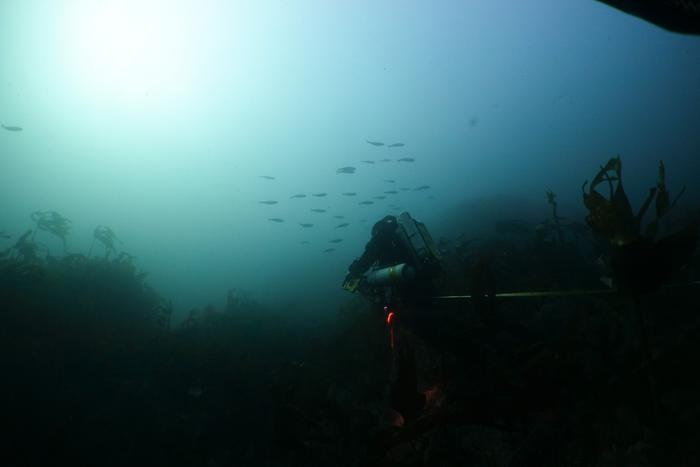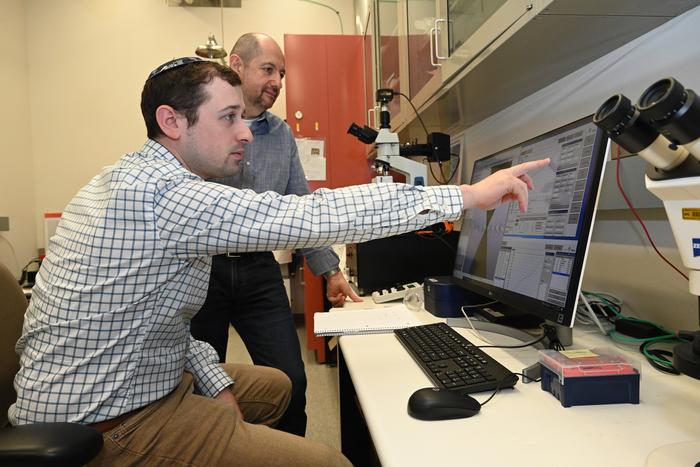62% of Marine Protected Areas (MPAs) designated to protect rare migratory fish species are outside of their core habitats, according to a new modelling study. The findings are published in the British Ecological Society’s Journal of Applied Ecology.

Credit: Elliott et al.
62% of Marine Protected Areas (MPAs) designated to protect rare migratory fish species are outside of their core habitats, according to a new modelling study. The findings are published in the British Ecological Society’s Journal of Applied Ecology.
A team of researchers in France from the “Pole MIAME” that gathers diadromous fish experts from multiple research institutions (OFB, INRAE, Institut Agro and UPPA) have developed a new modelling approach that accurately predicts core and unsuitable habitats of rare and data-poor diadromous fish (fish which migrate between marine and freshwater), such as threatened shads and the IUCN red-listed ‘critically endangered’ European eel.
The researchers found that 62% of MPAs which are specifically meant to protect diadromous fish species, don’t overlap with the core habitats of the fish modelled in the study.
In fact, only 55% of the modelled core habitats of diadromous fish fell within any MPAs, and of these protected areas, only had half had specific measures to protect the species.
When looking at individual species, the researchers found that less than 30% of the endangered Mediterranean twaite shad (Alosa agone) core habitat was within MPAs.
Although other species such as European eel and European smelt had around 70% of their core habitats within MPAs, only 9% of these MPAs have specific measures to protect the European eel, and none had specific measures to protect European smelt.
Dr Sophie Elliott at the Game and Wildlife Conservation Trust (previously at Institute Agro in France) and lead author of the study, said “Given the sharp decline in diadromous fish which was noted just last week by The Living Planet Index (LPI) for migratory freshwater fishes 2024 update, it is a surprise more isn’t being done to protect these species.
“We found that existing Marine Protected Areas with and without measures to protect listed diadromous fish across France, England, Belgium, and the Netherlands are not adequately protecting them despite a number of these fish being protected.”
Dr Anthony Acou, at the French Biodiversity Agency and Patrinat, in charge of diadromous fish evaluation for the EU MSFD (Marine Strategy Framework Directive), and a co-author of the study, added that “Due to a lack of data on rare species, spatial protective measures are often implemented with little understanding of the species distribution and habitat (‘the rare species paradox’).”
Dr Laurent Beaulaton, also at the French Biodiversity Agency, and a co-author said “We hope that our ‘Combined Model for Accurate Prediction’ methodological framework can help improve accurate rare species distribution modelling for reliable biodiversity assessments, meaning conservation measures can be targeted in specific areas that protect rare and poorly detected species while also minimising conservation impacts on human activity.”
The researchers tested their newly developed modelling approach on diadromous fish because very little is known about their at-sea life history stage and there is no existing model of their distribution.
These types of fish are also sensitive to anthropogenic pressures. Dr Sophie Elliott explained that “Diadromous fish species are particularly threatened because they are subject to terrestrial, freshwater, and marine pressures such as agricultural and pollutant runoffs, habitat destruction, barriers to migration, fishing, bycatch, and climate change. These barriers cumulate through their life cycle as they travel between their freshwater and marine habitats.”
To test the accuracy of their new modelling approach, the researchers collated an unprecedented amount of data on fisheries-dependent and independent data within eastern Atlantic and Mediterranean waters, focussing on 11 rare and data-poor diadromous fish including the European eel, European flounder, smelt and three species of shad and the thinlip mullet. They then compared the predicted core and unsuitable habitats for the fish against 89 OSPAR and habitat Directive MPAs found in these waters.
The researchers would now like to see their modelling approach expanded to larger areas across the Northeast Atlantic and look closer at habitat types. “The next step is to better characterise at-sea functional habitats (migratory corridor, nursery area, refuge area) of the different species. But for that additional data are needed…” added Dr Etienne Rivot, a population modelling expert at DECOD (Ecosystem Dynamics and Sustainability), L’Institut Agro, INRAE, Ifremer, and a co-author of the study.
The researchers also highlight that the modelling approach could be used for other protected, threatened and usually rare species, particularly for species where protected areas have been put in place for their conservation.
– Ends –
Journal
Journal of Applied Ecology
DOI
10.1111/1365-2664.14664
Method of Research
Computational simulation/modeling
Article Title
Accurately predicting rare and poorly detectable species habitat for spatial protection
Article Publication Date
29-May-2024





